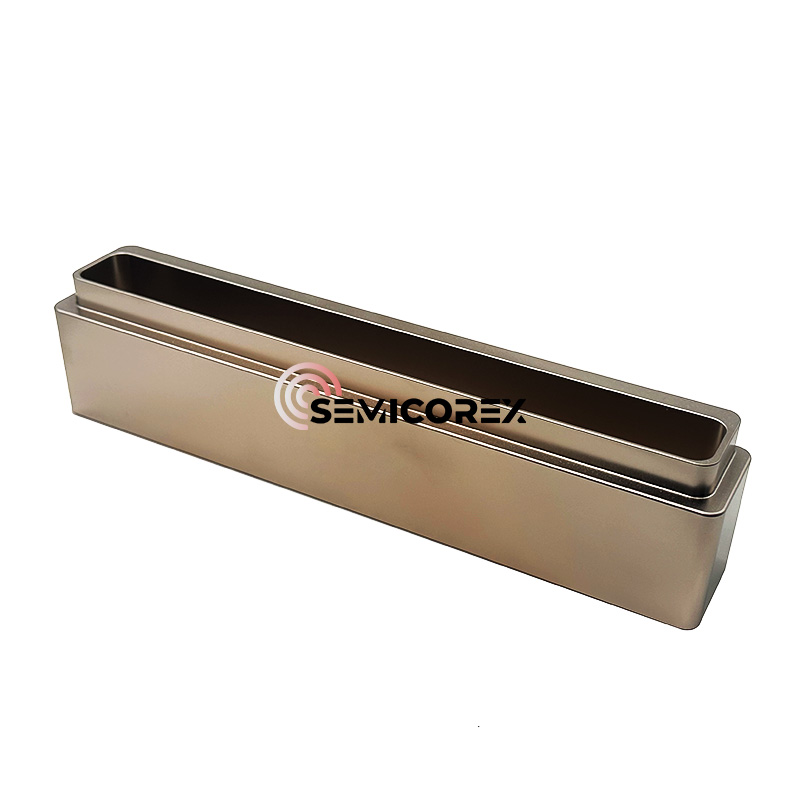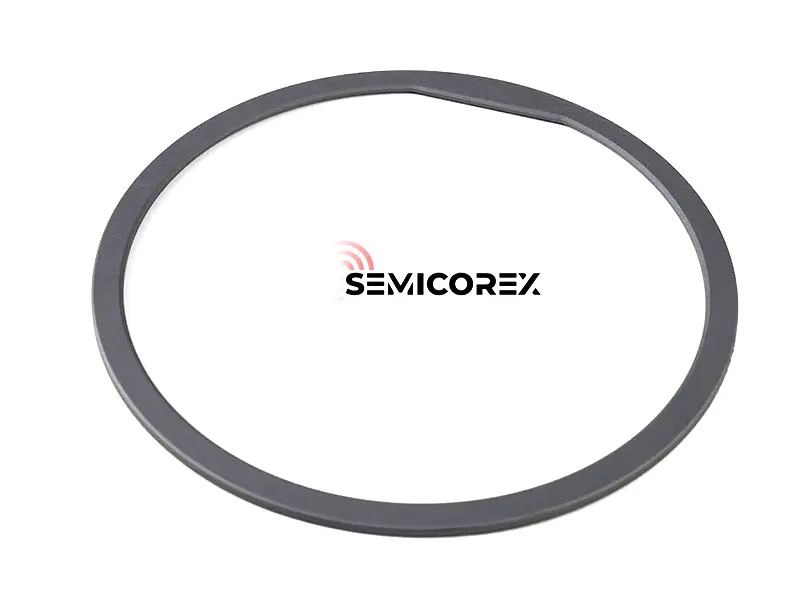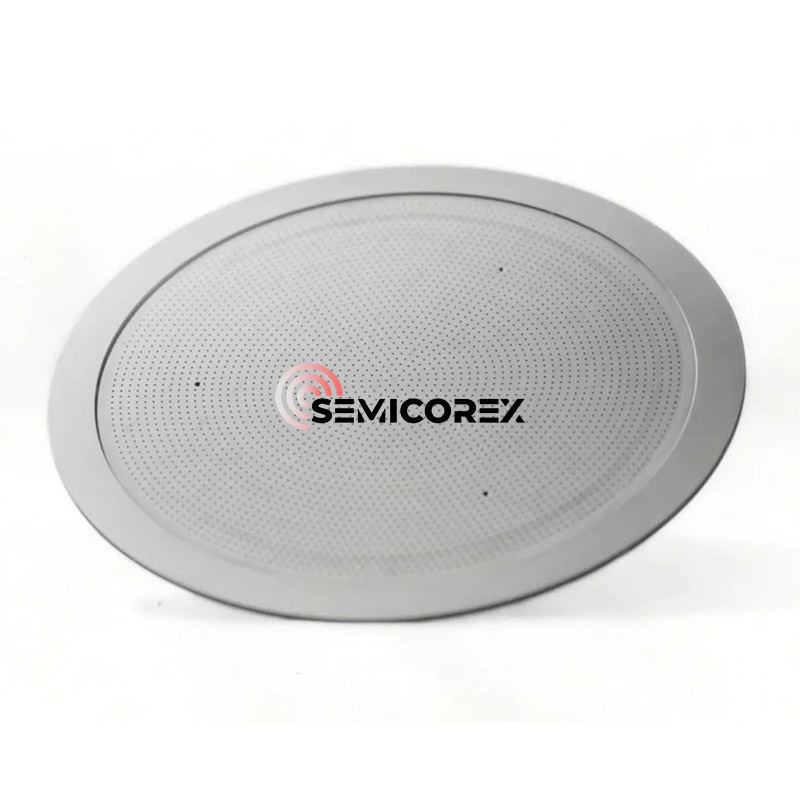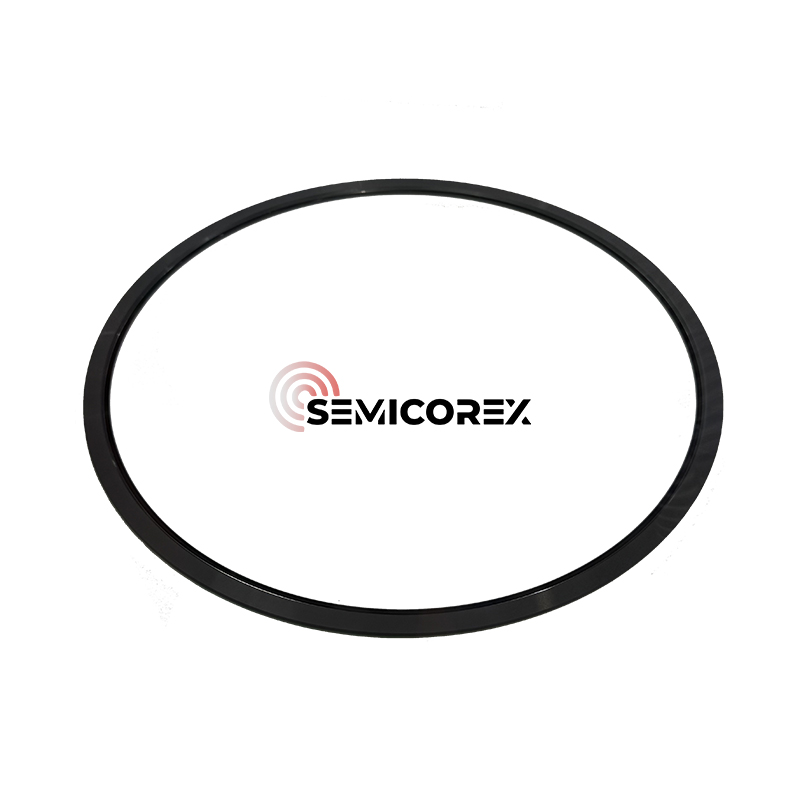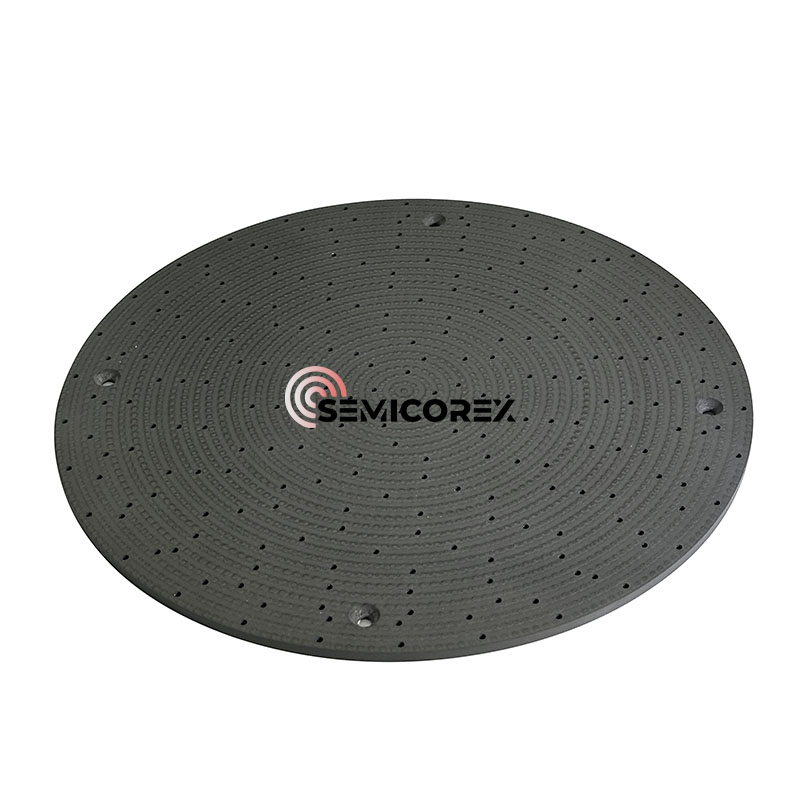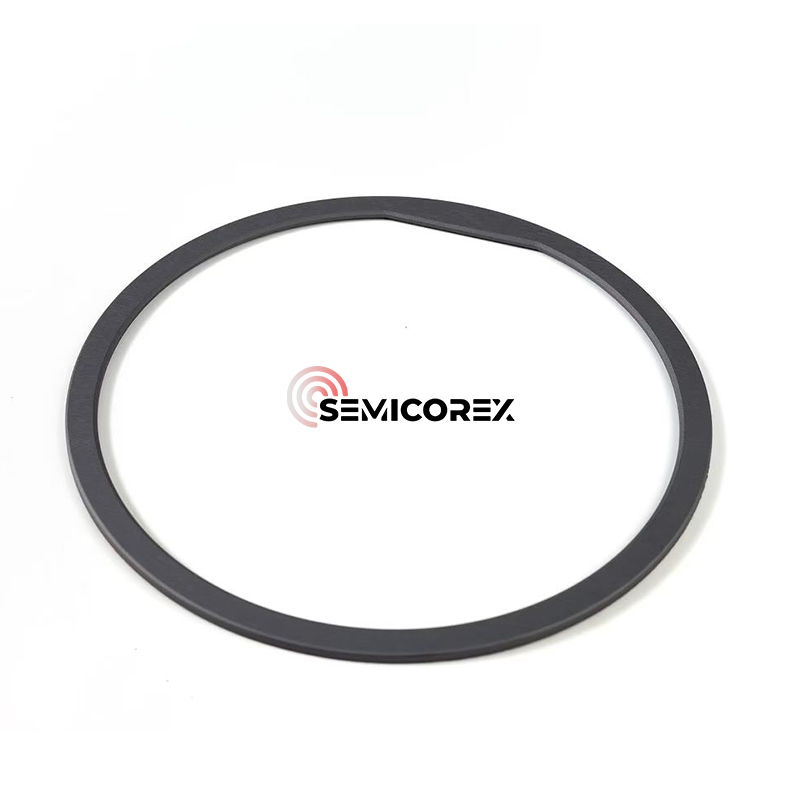
- English
- Español
- Português
- русский
- Français
- 日本語
- Deutsch
- tiếng Việt
- Italiano
- Nederlands
- ภาษาไทย
- Polski
- 한국어
- Svenska
- magyar
- Malay
- বাংলা ভাষার
- Dansk
- Suomi
- हिन्दी
- Pilipino
- Türkçe
- Gaeilge
- العربية
- Indonesia
- Norsk
- تمل
- český
- ελληνικά
- український
- Javanese
- فارسی
- தமிழ்
- తెలుగు
- नेपाली
- Burmese
- български
- ລາວ
- Latine
- Қазақша
- Euskal
- Azərbaycan
- Slovenský jazyk
- Македонски
- Lietuvos
- Eesti Keel
- Română
- Slovenski
- मराठी
- Srpski језик
China Cvd sic Pengilang, Pembekal, Kilang
CVD SiC is a vacuum deposition process used to produce high-purity solid materials. This process is often used in semiconductor manufacturing to form thin films on wafer surfaces. During the chemical vapor deposition (CVD) process for producing silicon carbide (SiC), a substrate is exposed to one or more volatile precursors, which chemically react on the substrate surface to form the desired SiC deposit. Among the various methods for producing SiC, CVD produces products with high uniformity and purity, and offers strong process controllability.
Simply put, CVD SiC refers to SiC produced via the chemical vapor deposition (CVD) process. In this process, gaseous precursors, typically containing silicon and carbon, react in a high-temperature reactor to deposit a thin SiC film onto a substrate. CVD SiC is valued for its exceptional properties, including high thermal conductivity, chemical inertness, mechanical strength, and resistance to thermal shock and wear. These properties make chemical vapor deposited (CVD) silicon carbide (SiC) ideal for demanding applications such as semiconductor manufacturing, aerospace components, armor, and high-performance coatings. This material's exceptional durability and stability under extreme conditions ensure its effectiveness in improving the performance and lifespan of advanced technologies and industrial systems.
CVD SiC materials, due to their unique combination of excellent thermal, electrical, and chemical properties, are well-suited for applications in the semiconductor industry, where high-performance materials are required. Chemical vapor deposited (CVD) silicon carbide (SiC) components are widely used in etching equipment, MOCVD equipment, Si and SiC epitaxy equipment, and rapid thermal processing equipment.
The largest market segment for CVD SiC components is etching equipment components. Due to its low reactivity to chlorine- and fluorine-containing etching gases and its electrical conductivity, CVD silicon carbide (SiC) is an ideal material for components such as focus rings in plasma etching equipment. CVD silicon carbide (SiC) components in etching equipment include focus rings, gas showerheads, trays, edge rings.
Take the focus ring, for example. This critical component is placed outside the wafer and in direct contact with it. Voltage is applied to the ring to focus the plasma passing through it, thereby focusing the plasma on the wafer and improving processing uniformity. Traditionally, focus rings are made of silicon or quartz. However, with the advancement of integrated circuit miniaturization, the demand for and importance of etching processes in integrated circuit manufacturing continues to increase. The power and energy of the plasma used for etching are also increasing, especially in capacitively coupled plasma (CCP) etching equipment, which requires even higher plasma energies. Consequently, focus rings made of silicon carbide are becoming increasingly popular.
Due to the high performance of CVD SiC and its ability to be sliced into very thin sections, it can also benefit sputter targets and all types of electrodes.
Process of Chemical Vapor Deposition (CVD)
CVD is a process that transforms a material from a gas phase to a solid phase, used to form a thin film or coating on a substrate surface. The following are the basic steps in CVD:
1. Substrate Preparation
Choose an appropriate substrate material and perform the appropriate cleaning and surface treating to produce a clean, flat surface with good adhesion.
2. Reactive Gas Preparation
Prepare the necessary amount of reactive gas or vapor and inject it into the deposition chamber by some means (gas supply system). The reactive gas can be an organic compound, a metal-organic precursor, inert gas, or other gaseous species.
3. Deposition Reaction
If all instrumentation is setup correctly the CVD process will begin under the pre-defined reaction conditions. The reactive gas that has been injected into the chamber will undergo some chemical or physical reaction on the substrate surface to form a deposit onto the substrate surface. The deposit formation can be the result of several types of processes depending on the deposition method, these include vapor-phase thermal decomposition, chemical reaction, sputtering, epitaxial growth, etc.
4. Control and Monitoring
At the same time during the deposition process, certain deposition parameters need to be controlled and monitored in real time if the observer wishes to ensure the best possible properties in the film are maintained. These include relevant temperature measurement, pressure monitoring, and regulation of gas flow, all the while aiming to keep the desired reaction conditions stable and constant.
5. Deposition Completion and Post-Processing
When either the deposition time, predetermined thickness, or method selected, is achieved the introduction of the reaction gas can be ceased and deposition process ended. Following the deposition, several pertinent post-processing methods (annealing, structural modifications, surface treatment, etc.) should be performed to improve the film performance/quality.
It's important to note that the specific vapor deposition process can vary depending on the deposition technology, material type, and application requirements. However, the basic process outlined above covers most common vapor deposition steps.
- View as
Kepala mandi cvd sic
Semicorex CVD SIC Shower Heads adalah komponen kejam yang tinggi, komponen yang direka bentuk untuk sistem etsa CCP dan ICP dalam pembuatan semikonduktor canggih. Memilih Semicorex bermakna mendapatkan penyelesaian yang boleh dipercayai dengan kesucian bahan yang unggul, ketepatan pemesinan, dan ketahanan untuk proses plasma yang paling menuntut.*
Baca LagiHantar PertanyaanCincin tepi
Cincin kelebihan Semicorex dipercayai oleh fabs semikonduktor terkemuka dan OEM di seluruh dunia. Dengan kawalan kualiti yang ketat, proses pembuatan lanjutan, dan reka bentuk yang didorong oleh aplikasi, Semicorex menyediakan penyelesaian yang memanjangkan hayat alat, mengoptimumkan keseragaman wafer, dan menyokong nod proses lanjutan.*
Baca LagiHantar PertanyaanPlat pengedaran gas
Plat pengedaran gas Semicorex, yang diperbuat daripada CVD SIC adalah komponen kritikal dalam sistem etsa plasma, yang direka untuk memastikan penyebaran gas seragam dan prestasi plasma yang konsisten di seluruh wafer. Semicorex adalah pilihan yang dipercayai untuk penyelesaian seramik berprestasi tinggi, yang menawarkan kesucian bahan yang tidak dapat ditandingi, ketepatan kejuruteraan, dan sokongan yang boleh dipercayai yang disesuaikan dengan tuntutan pembuatan semikonduktor maju.*
Baca LagiHantar PertanyaanKepala Pancuran SiC Padat
Kepala Pancuran SiC Pepejal ialah komponen penting dalam pembuatan semikonduktor, direka khusus untuk proses pemendapan wap kimia (CVD). Semicorex, peneraju dalam teknologi bahan termaju, menawarkan Kepala Pancuran SiC Pepejal yang memastikan pengedaran gas prekursor yang unggul ke atas permukaan substrat. Ketepatan ini penting untuk mencapai hasil pemprosesan yang berkualiti tinggi dan konsisten.**
Baca LagiHantar PertanyaanCincin Fokus SiC CVD
Melalui proses pemendapan wap kimia (CVD), Cincin Fokus SiC Semicorex CVD didepositkan dengan teliti dan diproses secara mekanikal untuk mencapai produk akhir. Dengan sifat materialnya yang unggul, ia amat diperlukan dalam persekitaran fabrikasi semikonduktor moden yang menuntut.**
Baca LagiHantar PertanyaanCincin Mengukir
Cincin Etching yang diperbuat daripada CVD SiC ialah komponen penting dalam proses pembuatan semikonduktor, menawarkan prestasi luar biasa dalam persekitaran etsa plasma. Dengan kekerasan unggul, rintangan kimia, kestabilan terma, dan ketulenan yang tinggi, CVD SiC memastikan proses etsa adalah tepat, cekap dan boleh dipercayai. Dengan memilih Semicorex CVD SiC Etching Rings, pengeluar semikonduktor boleh meningkatkan jangka hayat peralatan mereka, mengurangkan masa henti dan meningkatkan kualiti keseluruhan produk mereka.*
Baca LagiHantar Pertanyaan

